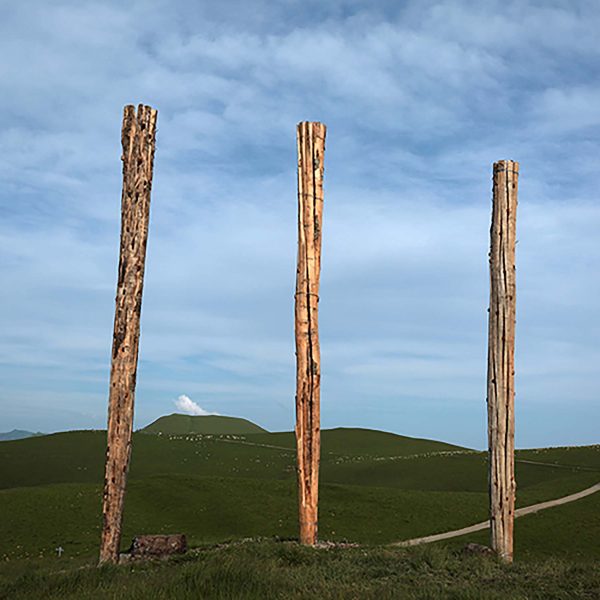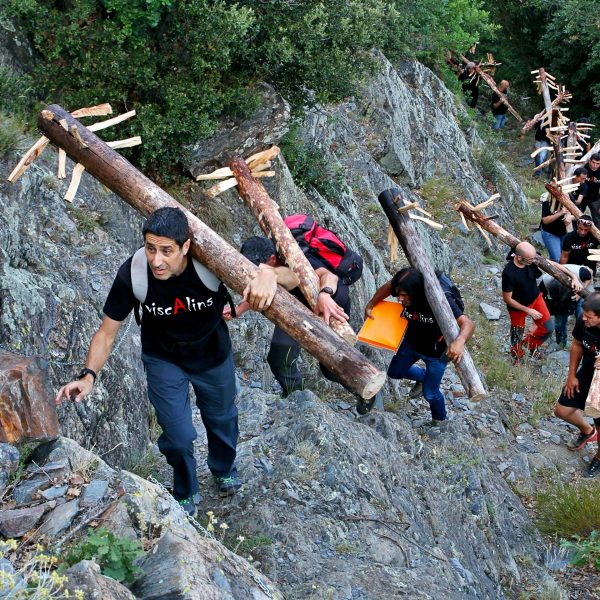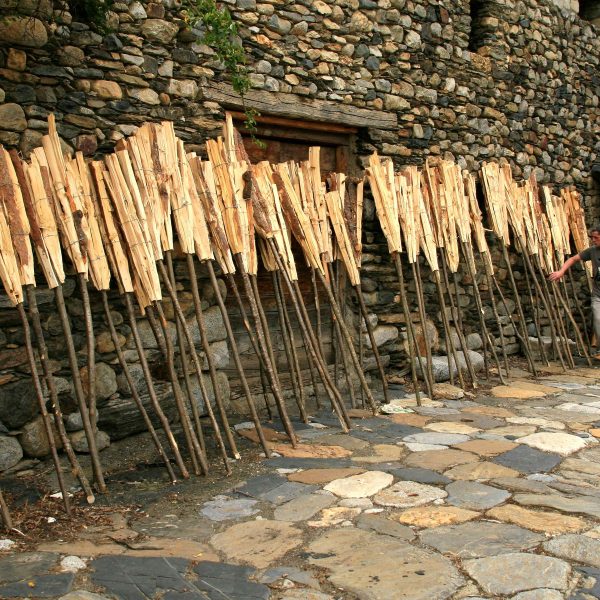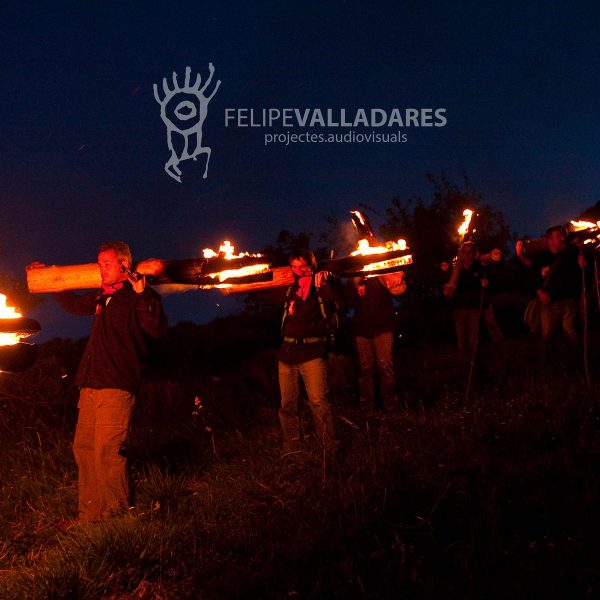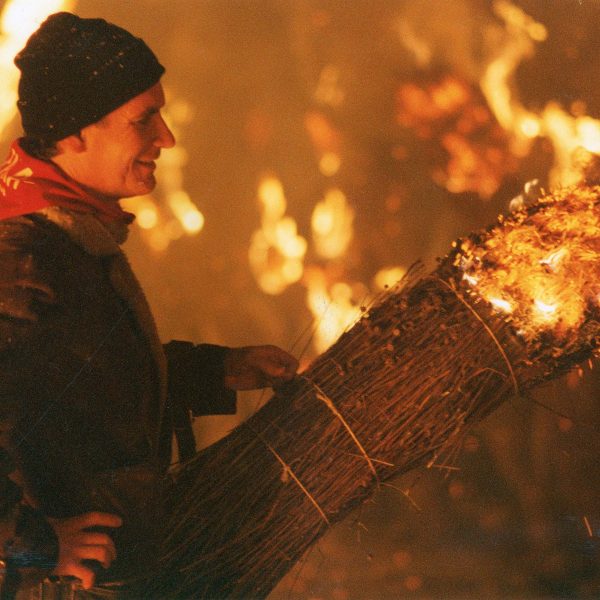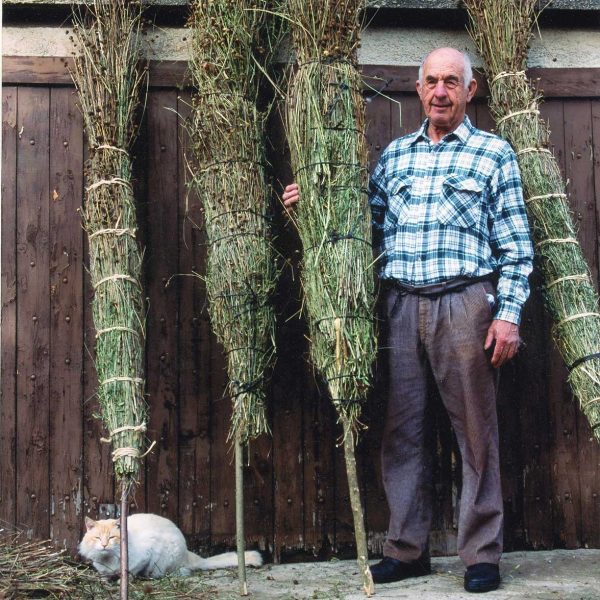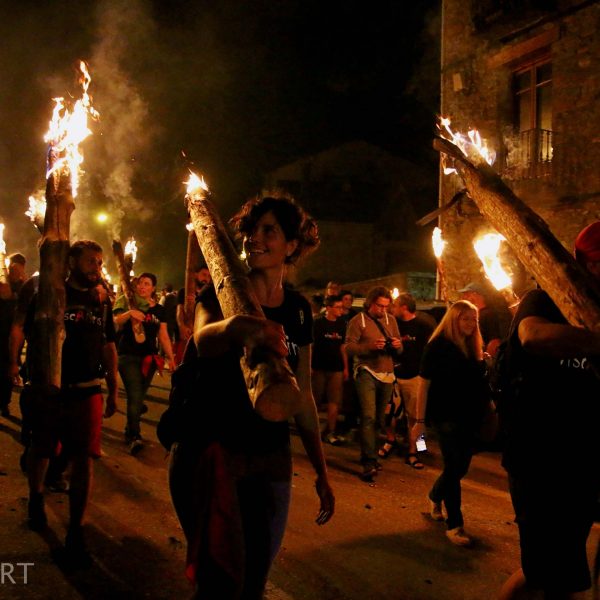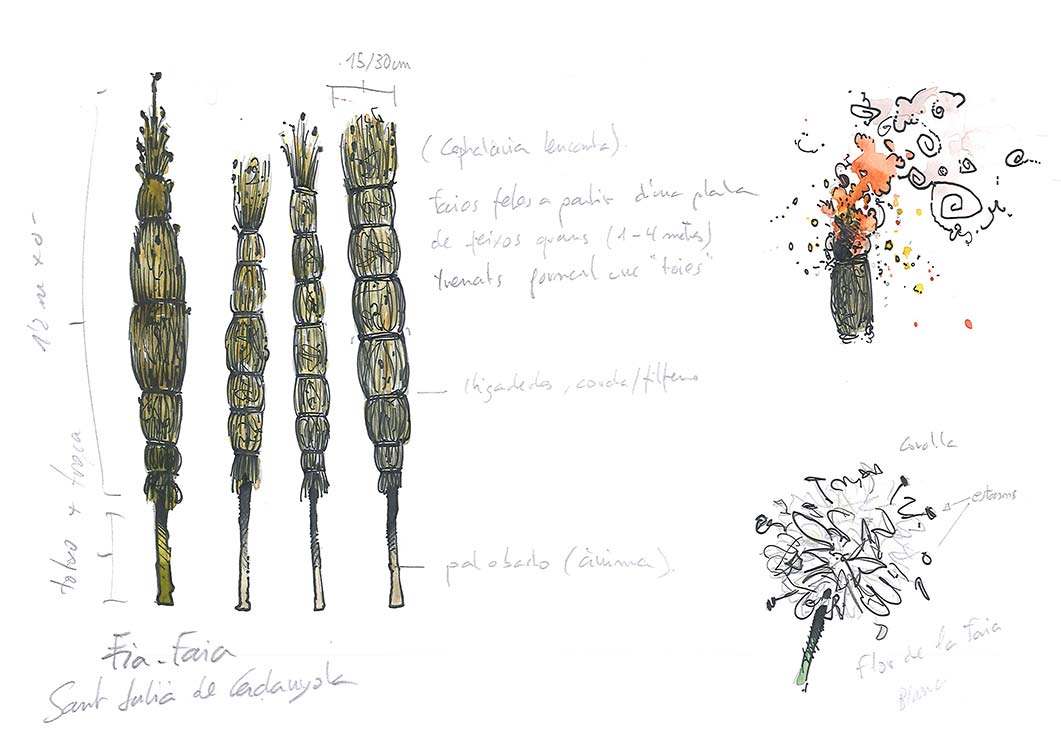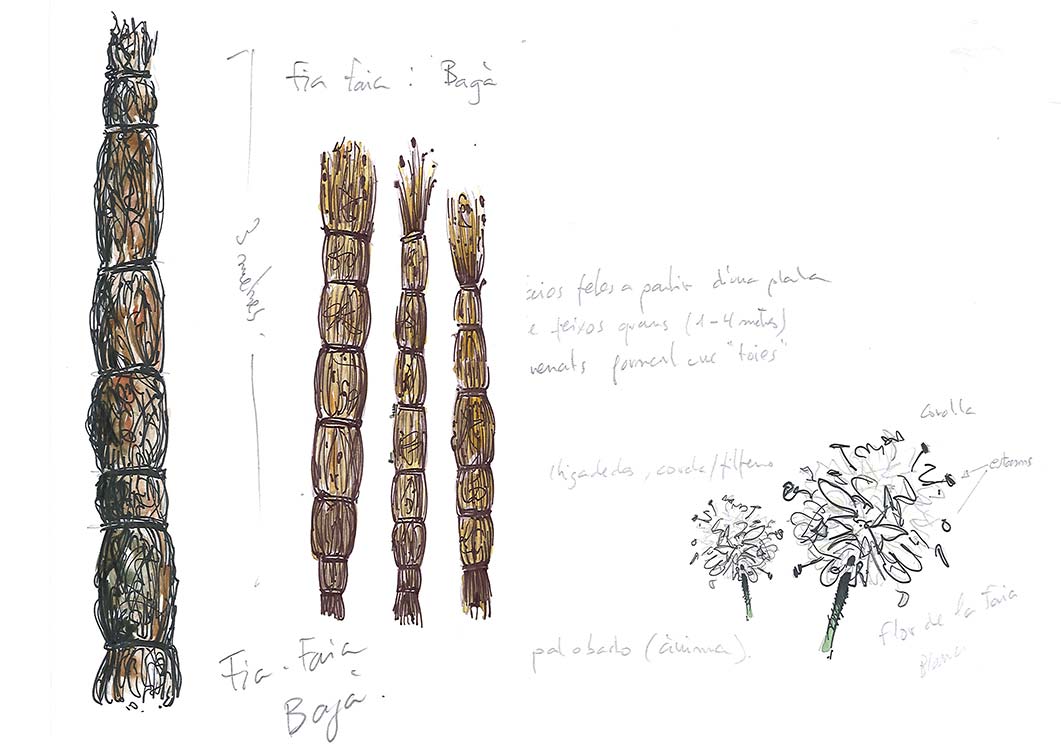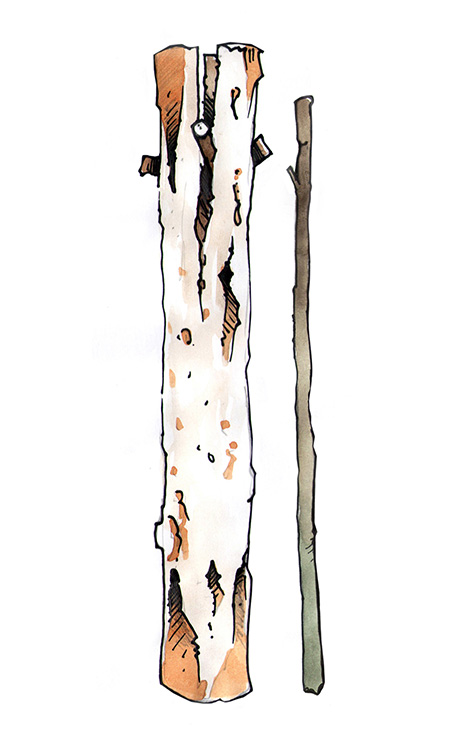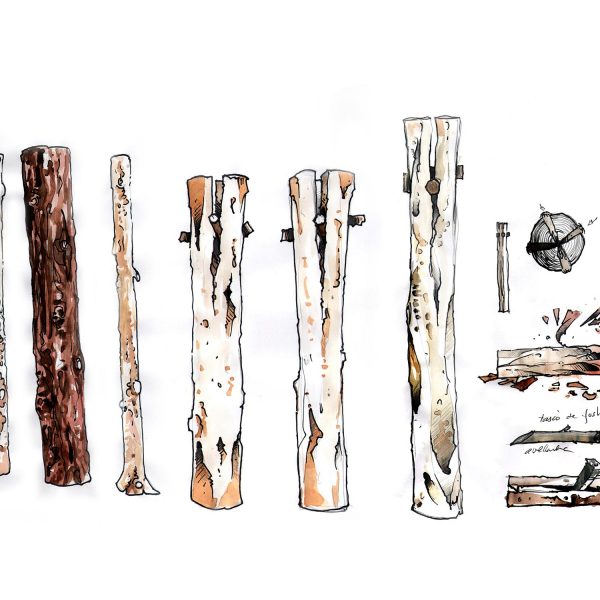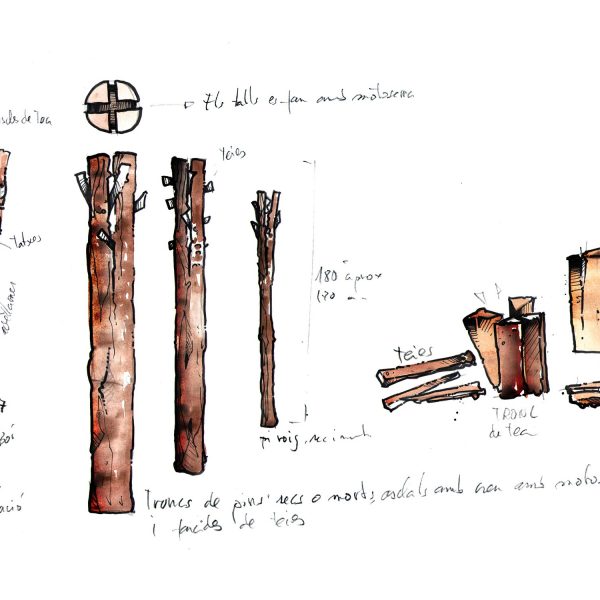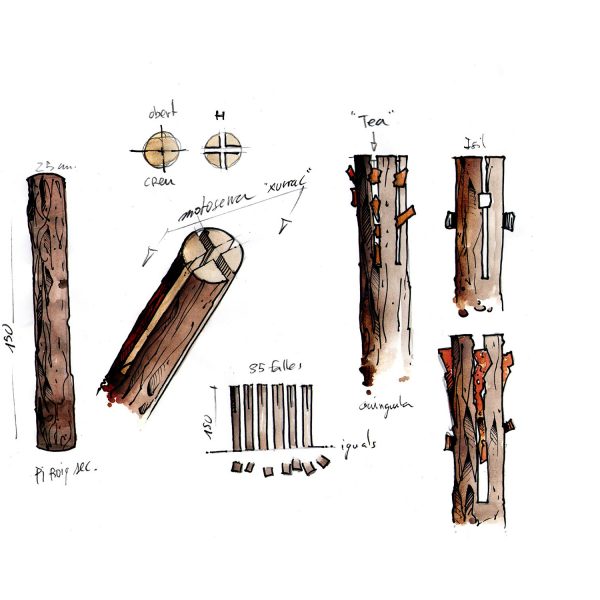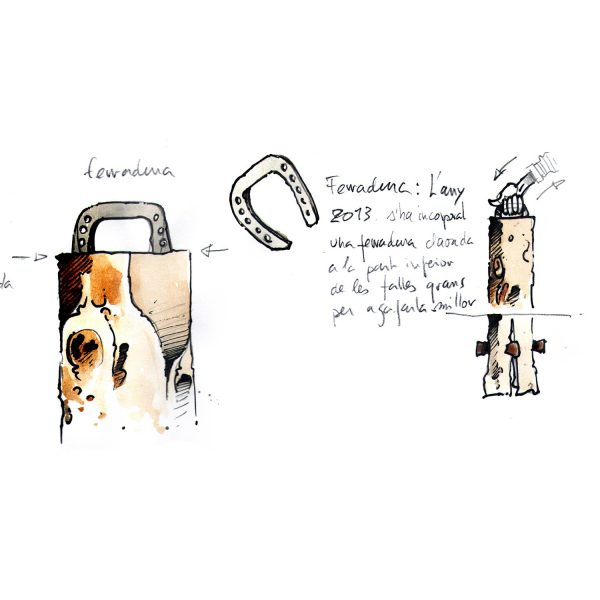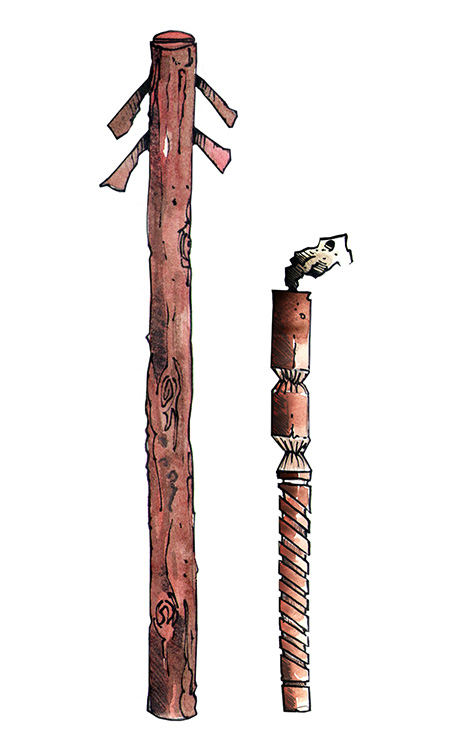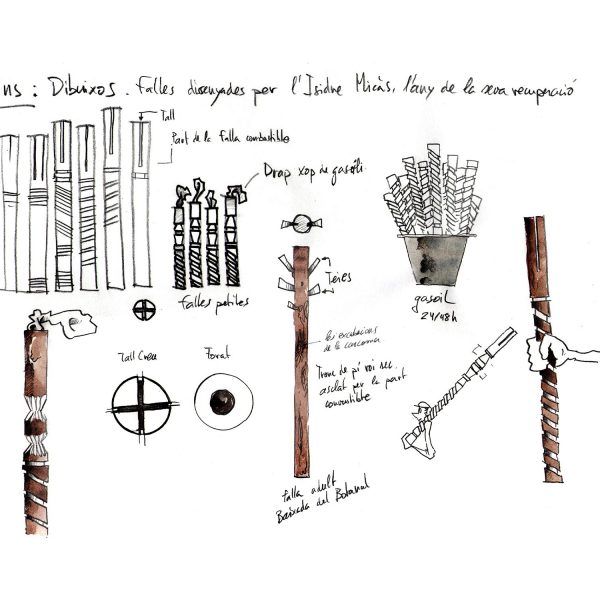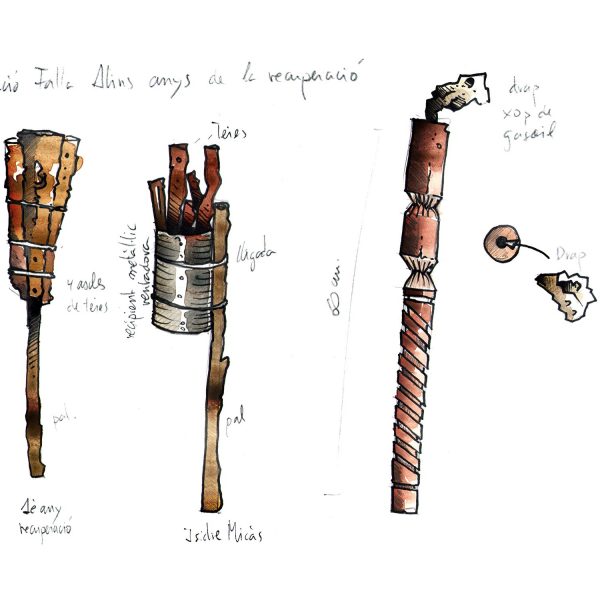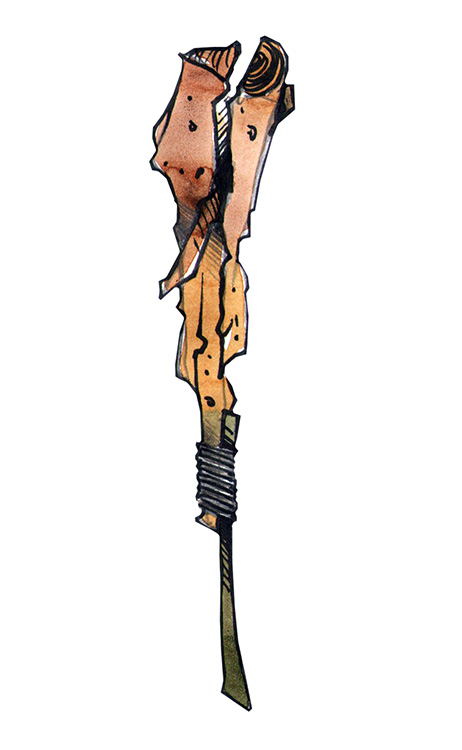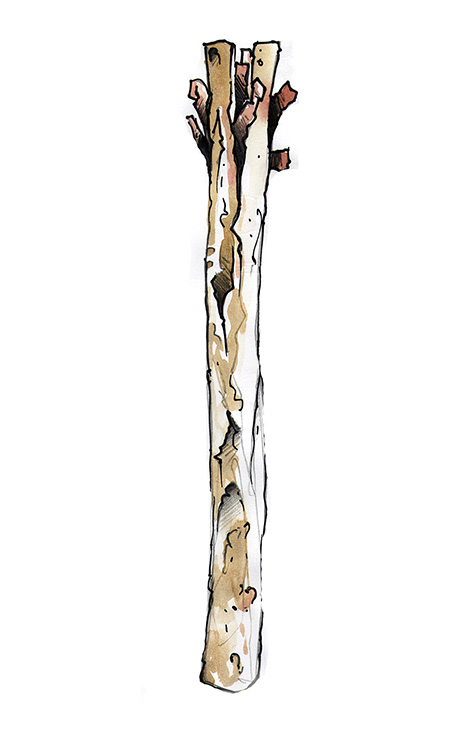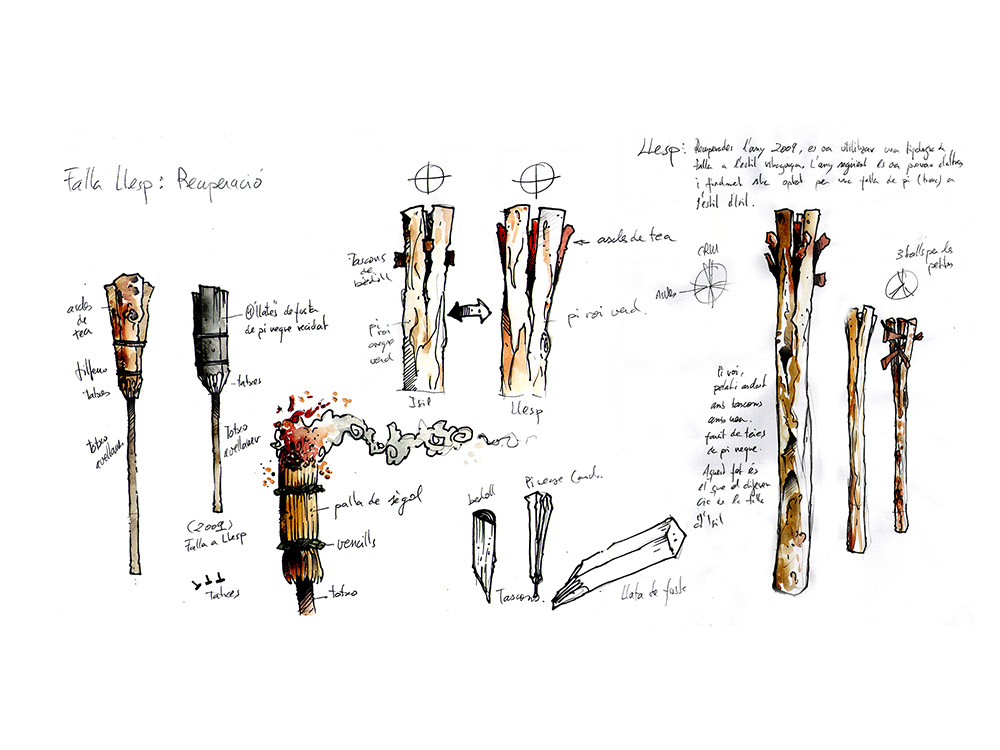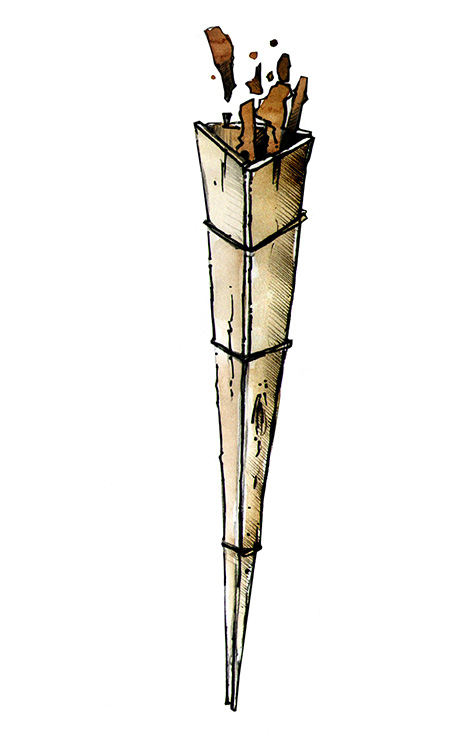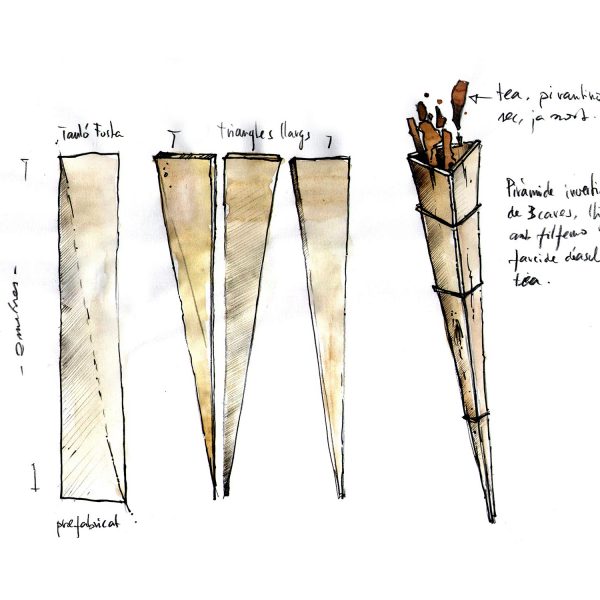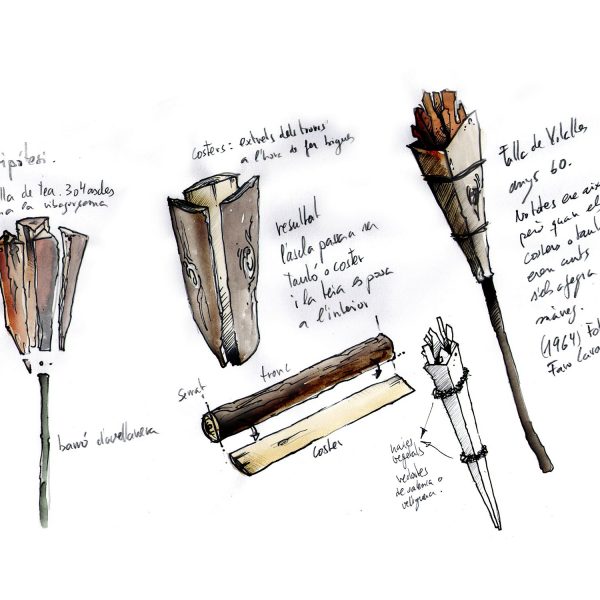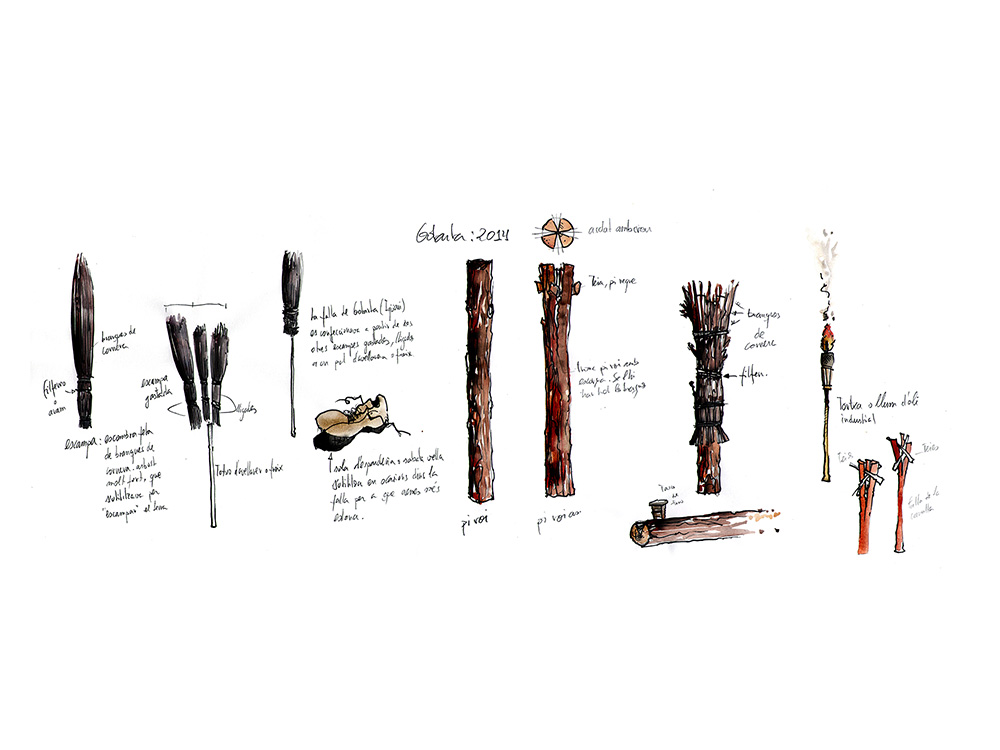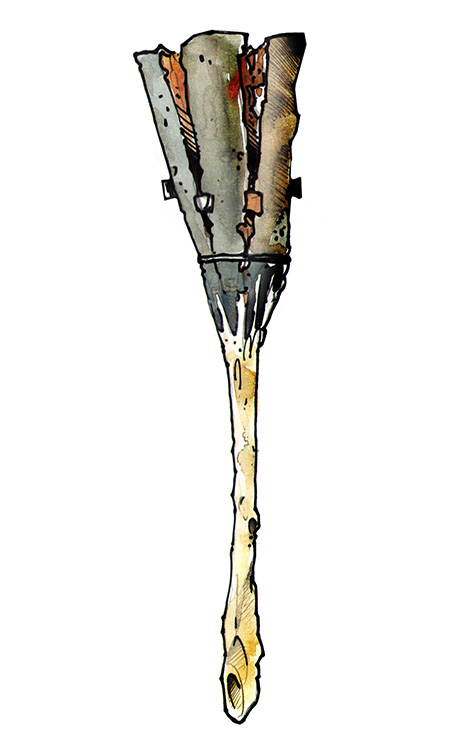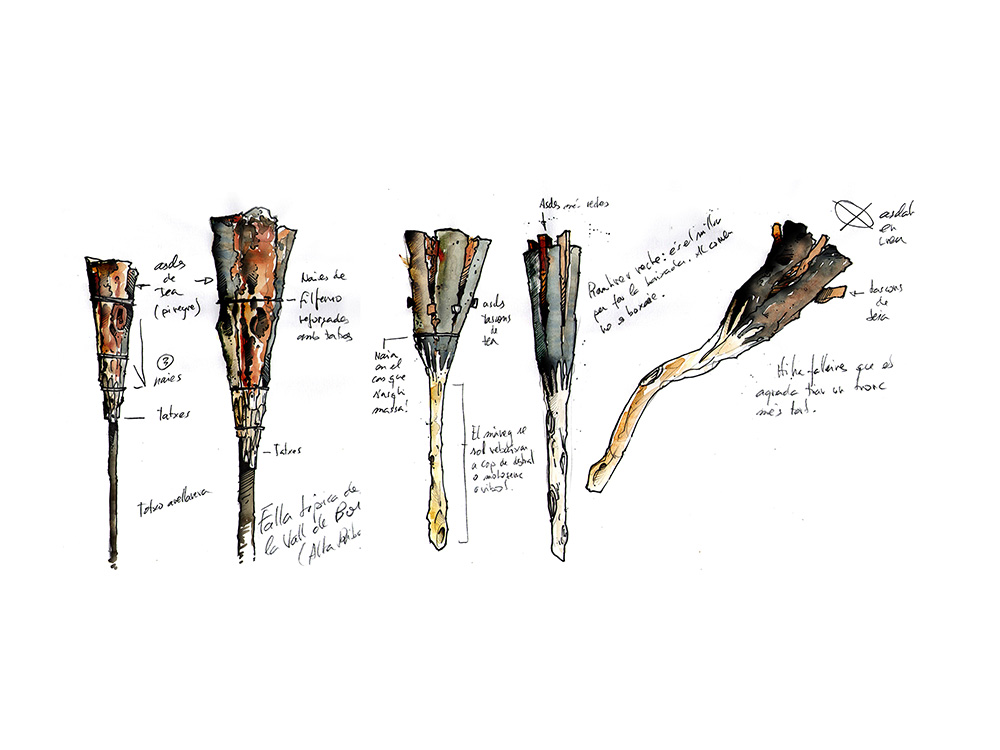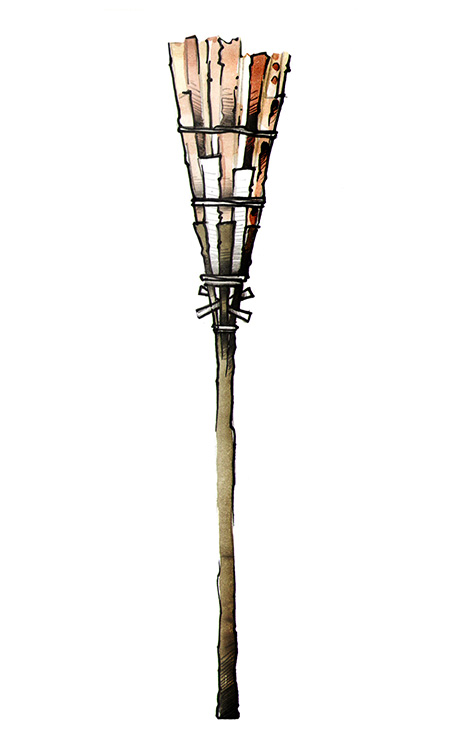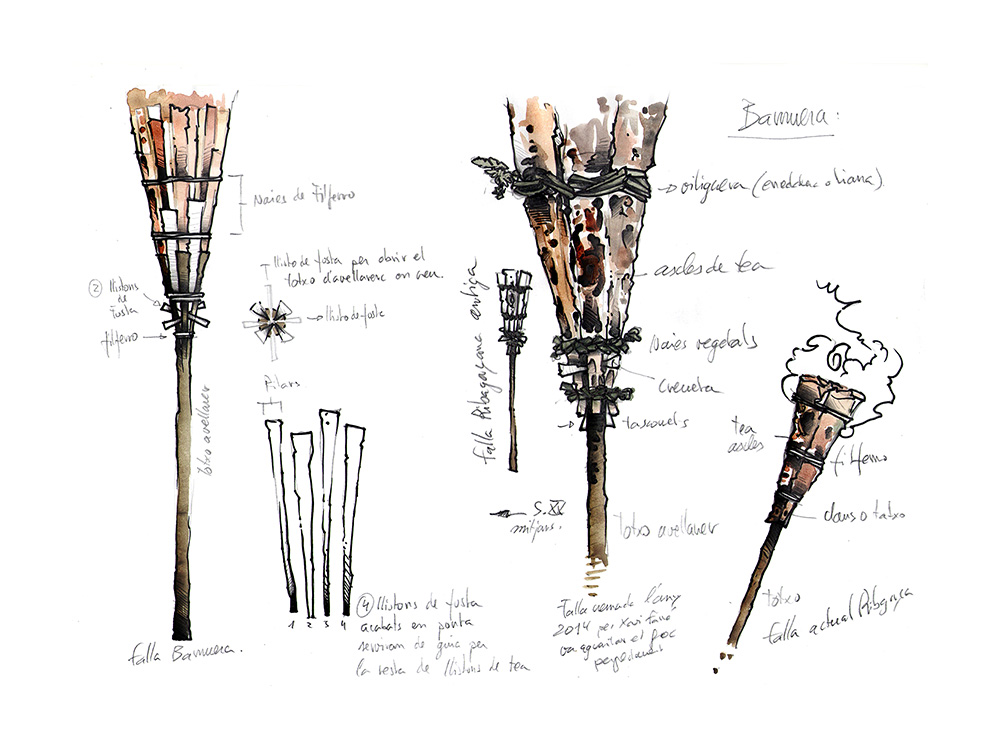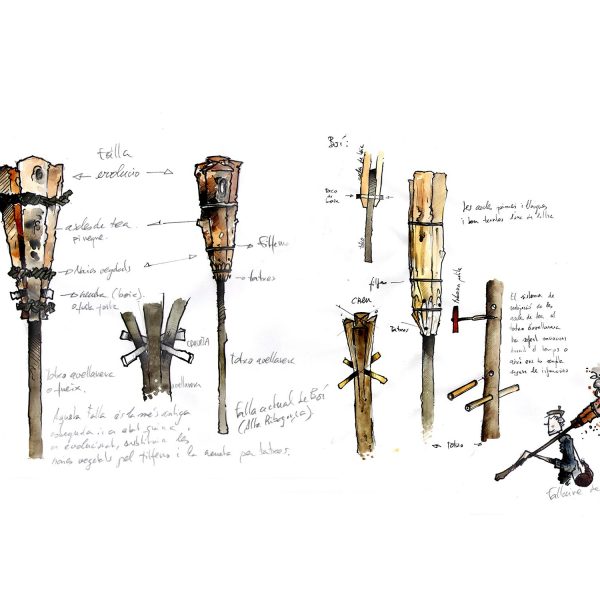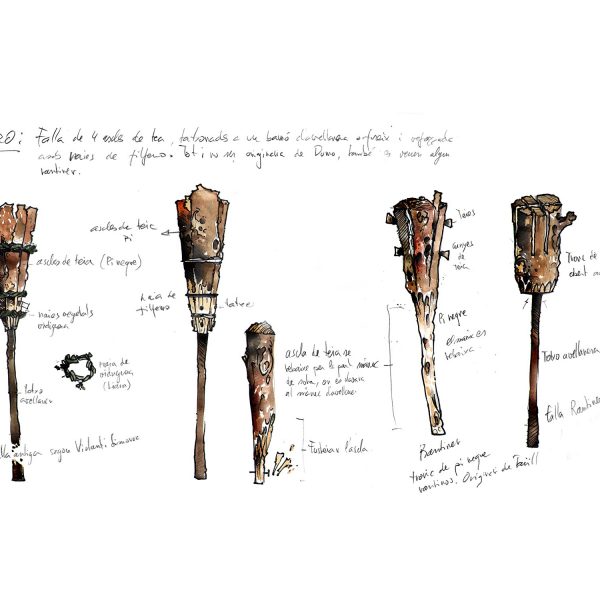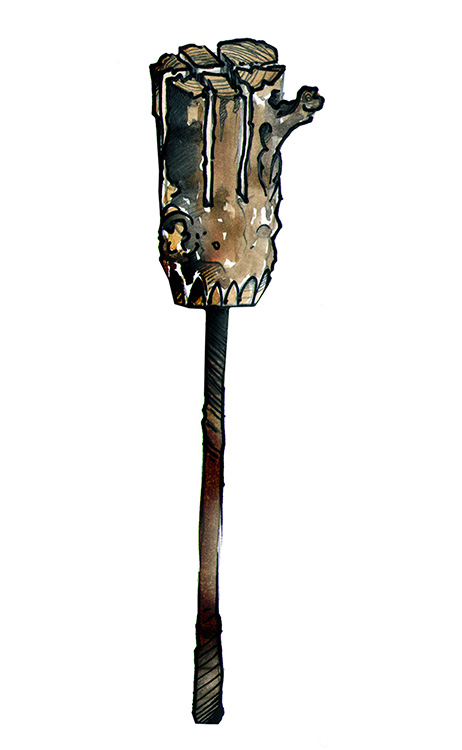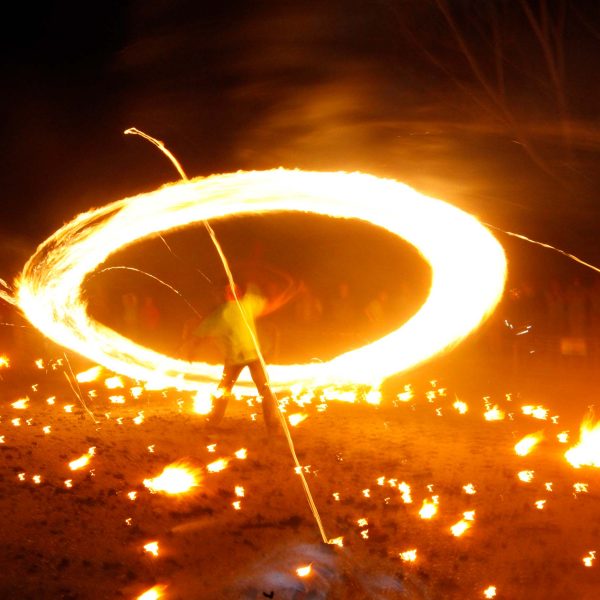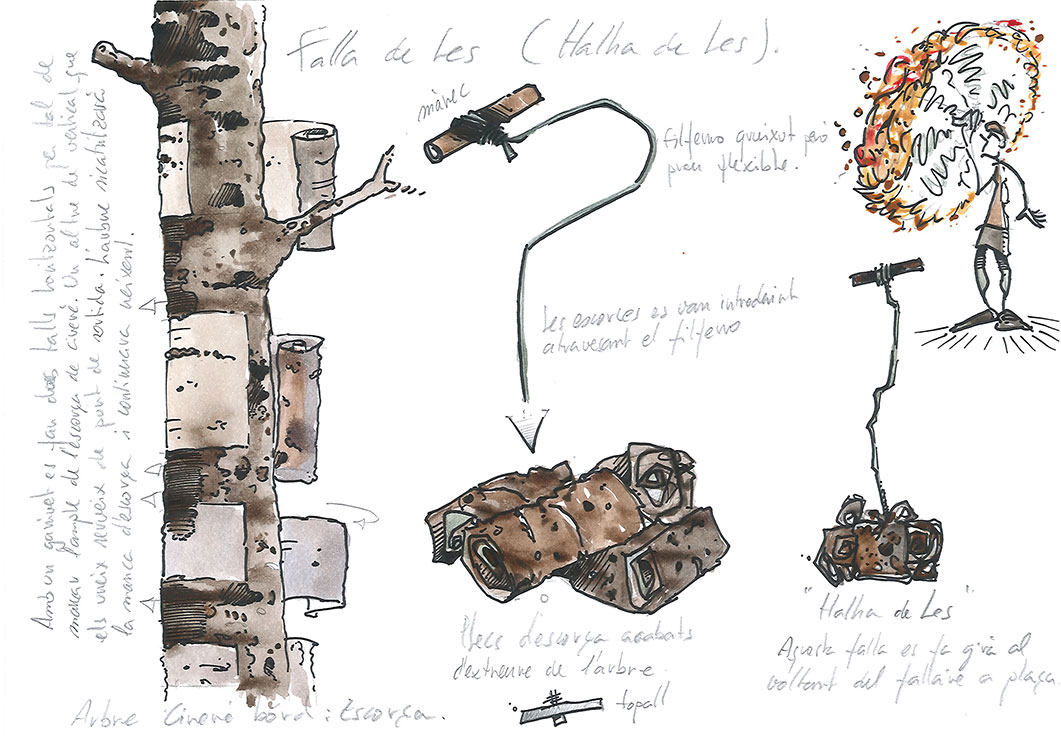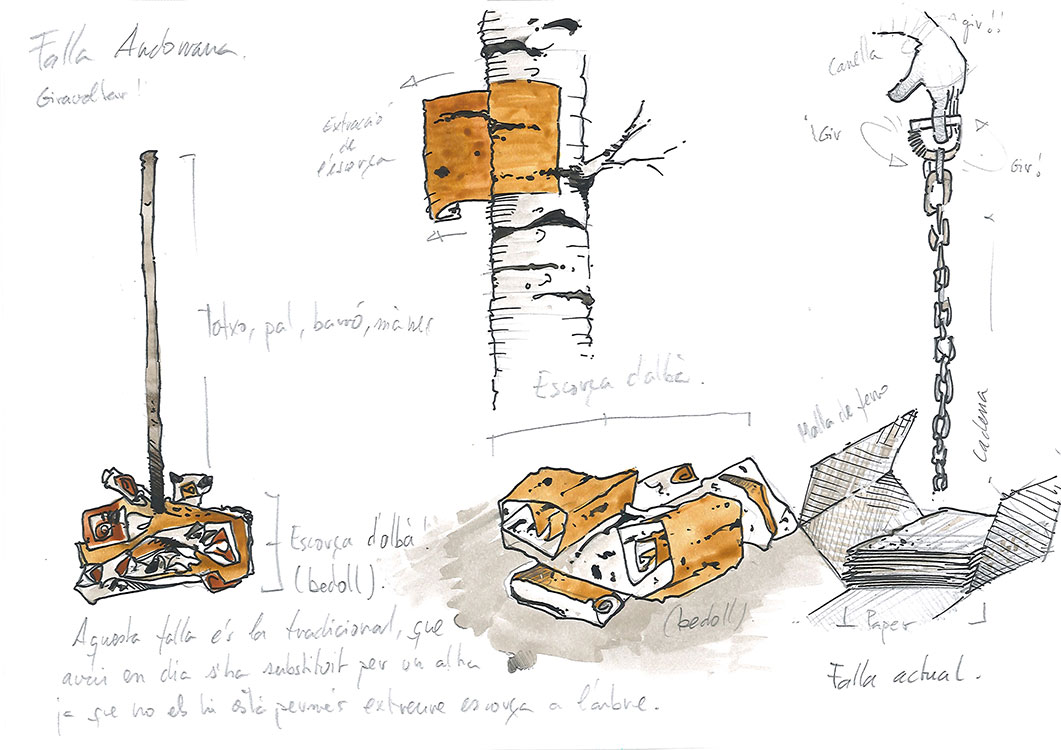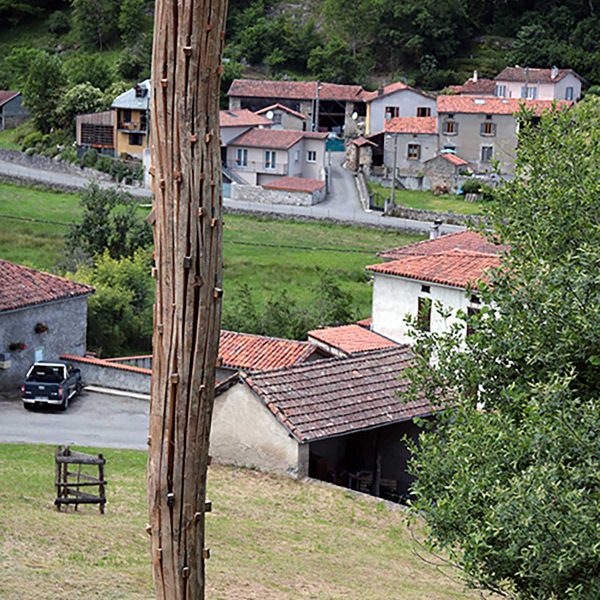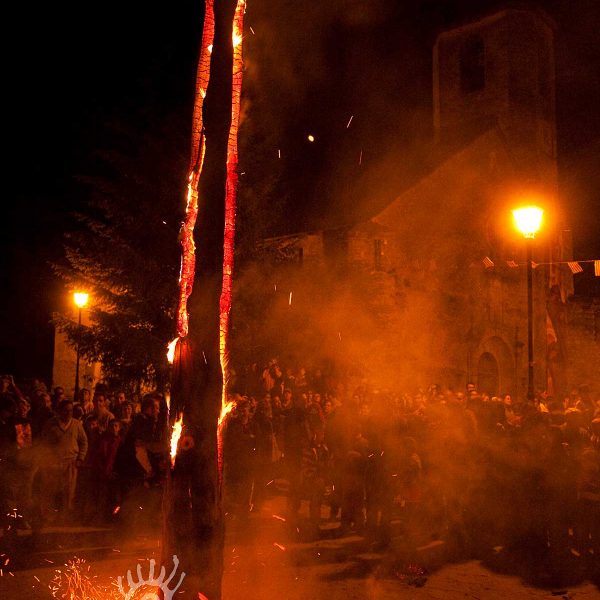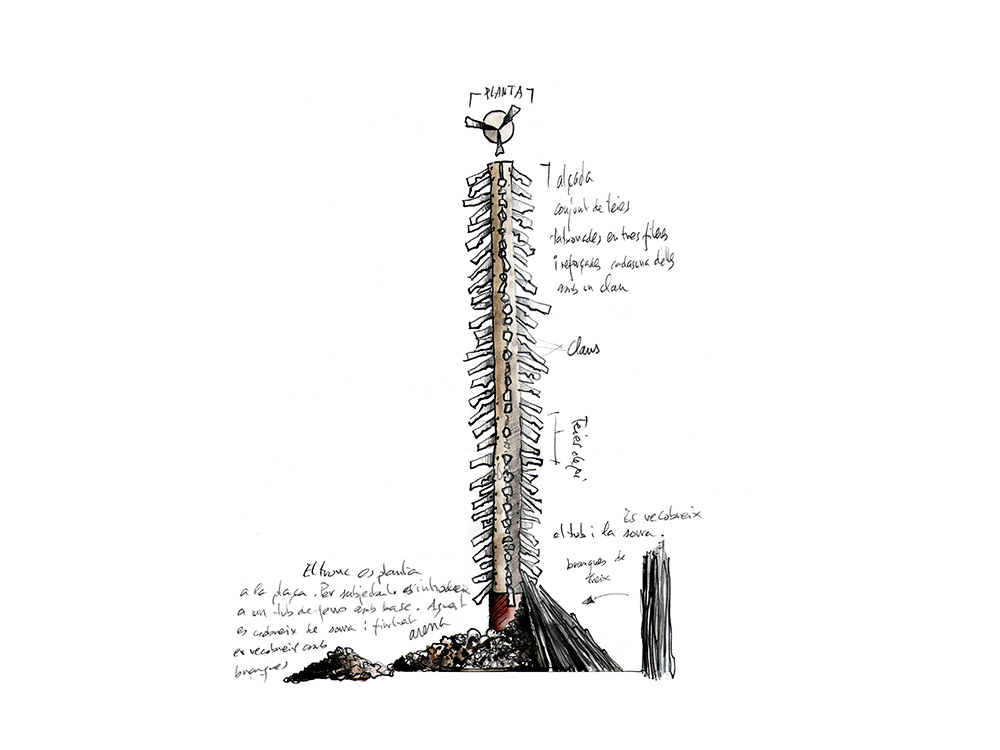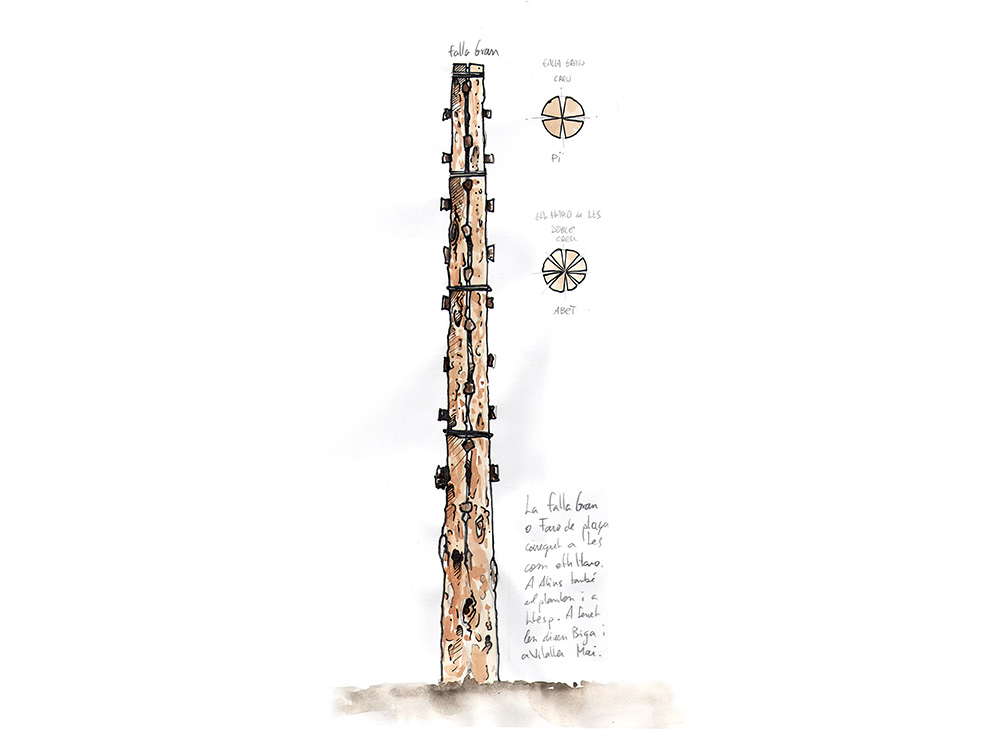There are numerous types of falles, haros and brandons. They have evolved over time and vary according to the material used and the extent to which technical knowledge and skills have been passed down the generations. Here are some examples.
Individual falles
Every village makes its own kind of falla, whose shape, size and materials all vary. There may even be different kinds of falla used in the same ceremony.
To find out more :
Riart, O.; Jordà, S. (2012). “Catalogació de les falles al Pirineu : descripció dels processos i elements fallaires” (Catalogue des falles dans les Pyrénées : description des processus et éléments de falles). Revista d’etnologia de Catalunya (Revue d’ethnologie de Catalogne), [en ligne], 38, p. 162-73.
Riart, O.; Jordà, S. (2015). Les falles des Pyrénées. L’Alta Ribagorça i el Pallars Sobirà. Lleida: Editorial Pagès.
Farré Sahún, X.; Ricart, S. (2016). Foc al faro (Feu au phare). La fiesta de las fallas en el Pirineo. La fête des falles dans les Pyrénées. Saragosse: Frames.
The Sant Julià de Cerdanyola faia
The faies in Sant Julià are made from Cephalaria leucantha grass, which is believed to have purifying powers. The grass is cut a week before the ceremony and braided to form a torch one to four meters long and fifteen to thirty centimeters thick. The grass is held together with cords. A hazel, juniper, pine or boxwood pole called the ànima (literally, the spirit) is inserted in the center. The grass is collected around Saint Martin’s Day (November 11) and left to dry.
To find out more :
Pedrals, X. (2007). Ancestral, màgica, única (Ancestral, magique, unique). Barcelone: Publicacions de l’Abadia de Montserrat.
Pedrals, X. i Escobet, M. (2017). Fia-faia. La festa de falles nadalenca (La fête des falles de Noël). Bagà-St. Julià de Cerdanyola: Farrell.
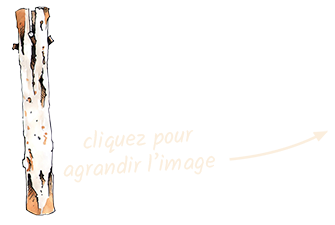
The Bagà faia
The faies in Bagà are made with a grass alled Cephalaria leucantha, which is believed to have purifying powers and is collected from the forest a week in advance. It is similar to the faia made in Sant Julià, but there is no pole (ànima) inside. It used to be hung on the balconies to provide a kind of magical protective aura. The grass is collected on Sant Martin’s Day and left to dry, before being tied with cords. The grass is plaited to form a bundle one to four meters long and fifteen to thirty centimeters thick.
To find out more :
Pedrals, X. (2007). Ancestral, màgica, única (Ancestral, magique, unique). Barcelone: Publicacions de l’Abadia de Montserrat.
Pedrals, X. i Escobet, M. (2017). Fia-faia. La festa de falles nadalenca (La fête des falles de Noël). Bagà-St. Julià de Cerdanyola: Farrell.
The Isil falla
The falla consists of a Scots pine branch that is debarked and forced open at one end with silver birch wedges. Fallaires carry a thin hazel pole on the opposite shoulder to help support the weight. The falla is between 1.5 and 1.8 meters long and can weigh between 20 and 40 kgs. Other neighboring towns, such as Alós d’Isil, also use this type of falla.
To find out more :
Riart, O.; Jordà, S. (2012). “Catalogació de les falles al Pirineu : descripció dels processos i elements fallaires” (Catalogue des falles dans les Pyrénées : description des processus et éléments de falles). Revista d’etnologia de Catalunya (Revue d’ethnologie de Catalogne), [en ligne], 38, p. 162-73.
Riart, O.; Jordà, S. (2015) Les falles del Pirineu (Les falles dans les Pyrénées) L’Alta Ribagorça i el Pallars Sobirà. Lleida: Editorial Pagès.
The València d’Àneu falla
This falla is made of hazel, silver birch, cherry or oak. The upper part is of Scots pine. One end is chopped open and several lengths of Scots pine are jammed inside. The falla may be between 1.5 and 1.8 meters long.
To find out more :
Riart, O.; Jordà, S. (2012). “Catalogació de les falles al Pirineu : descripció dels processos i elements fallaires” (Catalogue des falles dans les Pyrénées : description des processus et éléments de falles). Revista d’etnologia de Catalogne (Revue d’ethnologie de Catalogne), [en ligne], 38, p. 162-73.
Riart, O.; Jordà, S. (2015) Les falles del Pirineu (Les falles dans les Pyrénées). L’Alta Ribagorça i el Pallars Sobirà. Lleida: Editorial Pagès.
The Alins falla
The Alins falla is made of Scots Pine. The decorative horizontal bands are made with a chainsaw and a diesel cloth is placed at one end. Fallaires who are at the front of the first group and everyone in the second group carry larger, undecorated falles, similar to those in Isil.
To find out more :
Riart, O.; Jordà, S. (2012). “Catalogació de les falles al Pirineu : descripció dels processos i elements fallaires” (Catalogue des falles dans les Pyrénées : description des processus et éléments de falles). Revista d’etnologia de Catalogne (Revue d’ethnologie de Catalogne), [en ligne], 38, p. 162-73.
Riart, O.; Jordà, S. (2015) Les falles del Pirineu (Les falles dans les Pyrénées). L’Alta Ribagorça i el Pallars Sobirà. Lleida: Editorial Pagès.
The San Chuan de Plan falleta
The San Chuan de Plan falleta is made of pine. The torch is made of a length of wood less than one meter long. In some cases, a small hazel pole may be attached.
To find out more :
Ricart, S., Farré, X. (2016) Foc al faro (Feu au phare). La fiesta de las fallas en el Pirineo. La fête des falles dans les Pyrénées. Saragosse: Frames.
Ricart, S.; Farré, X. (2012) Foc al faro. La festa de les falles als Pirineus. Taüll: Alpinart.
Serrano, S.; Farré, X. (2017) Las fallas del Pirineo aragonés (Les falles dans les Pyrénées aragonaises). Saragosssa: Prames
The Llesp falla
The body and wedges of the Llesp falla, which is around 1.6 metres long, are made of mountain pine.
To find out more :
Riart, O.; Jordà, S. (2012). “Catalogació de les falles al Pirineu : descripció dels processos i elements fallaires” (Catalogue des falles dans les Pyrénées : description des processus et éléments de falles). Revista d’etnologia de Catalogne (Revue d’ethnologie de Catalogne), [en ligne], 38, p. 162-73.
Riart, O.; Jordà, S. (2015) Les falles del Pirineu. L’Alta Ribagorça i el Pallars Sobirà. Lleida: Editorial Pagès.
Ricart, S., Farré, X. (2016) Foc al faro. La fiesta de las fallas en el Pirineo. La fête des falles dans les Pyrénées. Saragosse: Frames.
Ricart, S.; Farré, X. (2012) Foc al faro. La festa de les falles als Pirineus. Taüll: Alpinart.
The Vilaller falla
The firewood in the upper part is made of mountain pine. The base is made from three triangular planks of about 1.8 m., which are bound with wire. The planks used now are made in sawmills, but were formerly bits of wood left over from beams and roofs in bad condition. There is a tradition of making a six-meter falla, which is brought down by four or five fallaires.
To find out more :
Riart, O.; Jordà, S. (2012). “Catalogació de les falles al Pirineu : descripció dels processos i elements fallaires” (Catalogue des falles dans les Pyrénées : description des processus et éléments de falles). Revista d’etnologia de Catalunya (Revue d’ethnologie de Catalogne), [en ligne], 38, p. 162-73.
Riart, O.; Jordà, S. (2015) Les falles del Pirineu. L’Alta Ribagorça i el Pallars Sobirà. Lleida: Editorial Pagès.
Ricart, S., Farré, X. (2016) Foc al faro. La fiesta de las fallas en el Pirineo. La fête des falles dans les Pyrénées. Saragosse: Frames
Ricart, S.; Farré, X. (2012) Foc al faro. La festa de les falles als Pirineus. Taüll: Alpinart.
The Gotarta falla
The falla was formerly made with cotoneaster branches from old brooms used to brush corrals and threshing floors. Nowadays, branches are sometimes tied on to the falla with wire as a reminder of the original.
To find out more :
Riart, O.; Jordà, S. (2012). “Catalogació de les falles al Pirineu : descripció dels processos i elements fallaires” (Catalogue des falles dans les Pyrénées : description des processus et éléments de falles). Revista d’etnologia de Catalunya (Revue d’ethnologie de Catalogne), [en ligne], 38, p. 162-73.
Riart, O.; Jordà, S. (2015) Les falles del Pirineu. L’Alta Ribagorça i el Pallars Sobirà. Lleida: Editorial Pagès.
The Rantiner
The Rantiner originated in Taüll, but is now also carried in other parts of the Boí Valley. Made from a single trunk, the handle part is thinned down and the upper part is cut open and wedges bound in with wire. Each fallaire makes his own rantiner from highly resinous pines near the Cavallers dam.
To find out more :
Riart, O.; Jordà, S. (2012). “Catalogació de les falles al Pirineu : descripció dels processos i elements fallaires” (Catalogue des falles dans les Pyrénées : description des processus et éléments de falles). Revista d’etnologia de Catalunya (Revue d’ethnologie de Catalogne), [en ligne], 38, p. 162-73.
Riart, O. ; Jordà, S. (2015). Les falles del Pirineu (Les falles dans les Pyrénées). L’Alta Ribagorça i el Pallars Sobirà. Lleida: Editorial Pagès.
Ricart, S. ; Farré, X. (2016). Foc al faro (Feu au phare). La fiesta de las fallas en el Pirineo. La fête des falles dans les Pyrénées. Saragosse : Frames.
Ricart, S.; Farré, X. (2012). Foc al faro. La festa de les falles als Pirineus. Taüll: Alpinart.
The Barruera falla
The Barruera falla is carried mainly by children, while adults carry the Ribagorçana type. It is prepared by parents or godparents of the children and made from a hazel stick that is cut open into four parts in the form of a broom.
To find out more :
Riart, O.; Jordà, S. (2012). “Catalogació de les falles al Pirineu : descripció dels processos i elements fallaires” (Catalogue des falles dans les Pyrénées : description des processus et éléments de falles). Revista d’etnologia de Catalunya (Revue d’ethnologie de Catalogne), [en ligne], 38, p. 162-73.
Riart, O.; Jordà, S. (2015). Les falles del Pirineu. L’Alta Ribagorça i el Pallars Sobirà. Lleida: Editorial Pagès.
Ricart, S.; Farré, X. (2016). Foc al faro. La fiesta de las fallas en el Pirineo. La fête des falles dans les Pyrénées. Saragosse: Frames.
Ricart, S.; Farré, X. (2012). Foc al faro. La festa de les falles als Pirineus. Taüll: Alpinart.
Rantinera falla
The Rantinera falla is a blend of the falla ribagorçana and the rantiner. The handle is made of a hazel pole and the upper part out of mountain pine. When the Rantiner gets too short, it is cut and tied to a pole. It is carried in the Boí Valley and in Castanesa.
To find out more :
Riart, O.; Jordà, S. (2012). “Catalogació de les falles al Pirineu : descripció dels processos i elements fallaires” (Catalogue des falles dans les Pyrénées : description des processus et éléments de falles). Revista d’etnologia de Catalunya (Revue d’ethnologie de Catalogne), [en ligne], 38, p. 162-73.
Riart, O.; Jordà, S. (2015). Les falles del Pirineu. L’Alta Ribagorça i el Pallars Sobirà. Lleida: Editorial Pagès.
Falla ribagorçana
The falla ribagorçana consists of several pieces of resinous wood nailed to a hazel pole and bound with wire.
It is carried in the Boí Valley, El Pont de Suert, Senet, Casós, Bonansa, Montanui, Castanesa, Laspaúls, Aneto, Suils, and Villarrué.
To find out more :
Riart, O.; Jordà, S. (2012). “Catalogació de les falles al Pirineu : descripció dels processos i elements fallaires” (Catalogue des falles dans les Pyrénées : description des processus et éléments de falles). Revista d’etnologia de Catalunya (Revue d’ethnologie de Catalogne), [en ligne], 38, p. 162-73.
Riart, O.; Jordà, S. (2015). Les falles del Pirineu. L’Alta Ribagorça i el Pallars Sobirà. Lleida: Editorial Pagès.
Ricart, S., Farré, X. (2016). Foc al faro. La fiesta de las fallas en el Pirineo. La fête des falles dans les Pyrénées. Saragosse: Frames.
Ricart, S.; Farré, X. (2012). Foc al faro. La festa de les falles als Pirineus. Taüll: Alpinart.
The Comenge halha
The Comenge halha is made of lime, fir, or birch and is swung in circles around the Har. The type of wood with which the falla is made depends on the area. The wedges are usually made of hazel. A bouquet of flowers may also be placed on the end, as in the case of the Har. Tradition dictates that the handle must be kept for good luck once it has been burnt. The falla is between 1.5 and 2 meters long. This individual falla has been lost in many French villages, but it seems that it may be coming back into fashion now.
To find out more :
Ricart, S., Farré, X. (2016). Foc al faro (Feu au phare). La fiesta de las fallas en el Pirineo. La fête des falles dans les Pyrénées. Saragosse : Frames.
Ricart, S.; Farré, X. (2012). Foc al faro. La festa de les falles als Pirineus. (Feu au phare. La fête des falles dans les Pyrénées). Taüll: Alpinart.
Falles swung in circles
In some towns, the falles are whirled around in circles creating balls of fire. The falles have to be fairly light so that they can be swung without too much difficulty. The visual effect is extraordinary.
The Saún falla
The handles are made of hazel and the fuel with beech bark. The bark is carefully removed from the tree every year using a technique that enables the bark to regenerate. This process is carried out a few days in advance so that the bark dries out completely and burns well on Saint John’s Eve. The pieces of bark are folded and inserted into a long open slot at the top, parallel to the handle. The bark is bound in with two pieces of wire, one at the bottom and one at the top, and the bark is held in place in two slots.
To find out more :
Serrano, R.; Farré, X. (2017). Las fallas del Pirineo aragonés (Les falles dans les Pyrénées aragonaises). Saragosse: Prames.
Ricart, S., Farré, X. (2016). Foc al faro. La fiesta de las fallas en el Pirineo. La fête des falles dans les Pyrénées. Saragosse : Frames.
Ricart, S.; Farré, X. (2012). Foc al faro. La festa de les falles als Pirineus. Taüll: Alpinart.
The Les halha
The Les halha is made of cherry wood and a wire. It is swung in circles around the Haro and there are often mock battles between two fallaires. The halhas symbolize purification and are believed to ward off evil spirits.
The Andorra falla
The falla used to be made of beech and had a boxwood handle, but nowadays, a falla made of papier mâché and wire netting is used in order to ensure safety. The falles are made with paper bundles that are shaped as if they were a bark and covered with chicken wire before being connected to a chain. Since 2005 children have whirled balls of light (falles made with colored lights).
To find out more :
Roig, Al. (2017). Roda el foc. 30 anys de falles a Andorre la Vella (30 ans de Falles à Andorre-la-Vieille). Lleida : Pagès editors.
Types of haro, brandon, and falla major
In Occitan villages the festival revolves around a tree trunk that is burnt in or near the center of the village. Called a brandon in French, har or halhar in Occitan, haro in Les (Aran Valle) and taro in Arties (Val d’Aran), the trunk is carefully prepared for burning. In some Catalan towns a falla major is erected in the center of the village and lit with the torches carried down by the fallaires.
Eth Haro / Eth Taro
At Les in the Aran Valley, the Haro is prepared in the second week of May and erected on Saint Peter’s Day (June 29), but it is not burnt until the following year. In a procession led by the most recently married couple in the village, the trunk is erected in the square before being crowned with flower offerings (a crown, a bouquet, and a cross), symbols of fertility and fecundity.
In Arties, it is called a taro and it is dragged around the village, with fallaires jumping repeatedly over the flames.
To find out more :
Menetrier, B. (2017). “Les Fêtes du Solstice d’Été en Aran et Cominges”, Revue de Comminges et des Pyrénées Centrales, nº133, 357-369.
Montoya, Jép de (2017). “Rites e mites ancestraus” (Rites et mythes ancestraux), Tèrra Aranesa, nº14, 107-114.
Brandó / Har, or Halhar
Made of fir, beech, oak, ash, chestnut, lime or Scots pine, in some villages it is customary to cover the trunk in straw. It may be between 6 and 10 meters high. Once it has been cut, it is debarked and wedges are inserted. Once erected in the village square, straw is inserted into the holes and a bouquet placed on top.
To find out more :
Ricart, S., Farré, X. (2016). Foc al faro (Feu au phare). La fiesta de las fallas en el Pirineo. La fête des falles dans les Pyrénées. Saragosse: Frames.
Ricart, S.; Farré, X. (2012). Foc al faro. La festa de les falles als Pirineus. Taüll: Alpinart.
The Alins falla major
The falla major is also known as the falla grossa. It is prepared on the Sabater threshing floor, located next to the square, and erected in a metal barrel full of sand.
It is between 6 and 7 meters high. A very similar falla major is made in Llesp.
To find out more :
Riart, O.; Jordà, S. (2012). “Catalogació de les falles al Pirineu : descripció dels processos i elements fallaires” (Catalogue des falles dans les Pyrénées : description des processus et éléments de falles). Revista d’etnologia de Catalunya (Revue d’ethnologie de Catalogne), [en ligne], 38, p. 162-73.
Riart, O.; Jordà, S. (2015). Les falles del Pirineu (Les falles dans les Pyrénées). L’Alta Ribagorça i el Pallars Sobirà. Lleida: Editorial Pagès.
Isil falla major
The Isil falla major is prepared around the 1st of May, together with the individual falles. Four lateral cuts are made with a chainsaw and large wooden stakes are driven into the trunk. It is about 10 meters high. In Vilaller and Senet there is also a tree with no branches or one with branches at the top, but it is not split open with stakes.
To find out more :
Riart, O.; Jordà, S. (2012). “Catalogació de les falles al Pirineu : descripció dels processos i elements fallaires” (Catalogue des falles dans les Pyrénées : description des processus et éléments de falles). Revista d’etnologia de Catalunya (Revue d’ethnologie de Catalogne), [en ligne], 38, p. 162-73.
Riart, O.; Jordà, S. (2015) Les falles del Pirineu (Les falles dans les Pyrénées). L’Alta Ribagorça i el Pallars Sobirà. Lleida: Editorial Pagès.
 Occitan
Occitan



